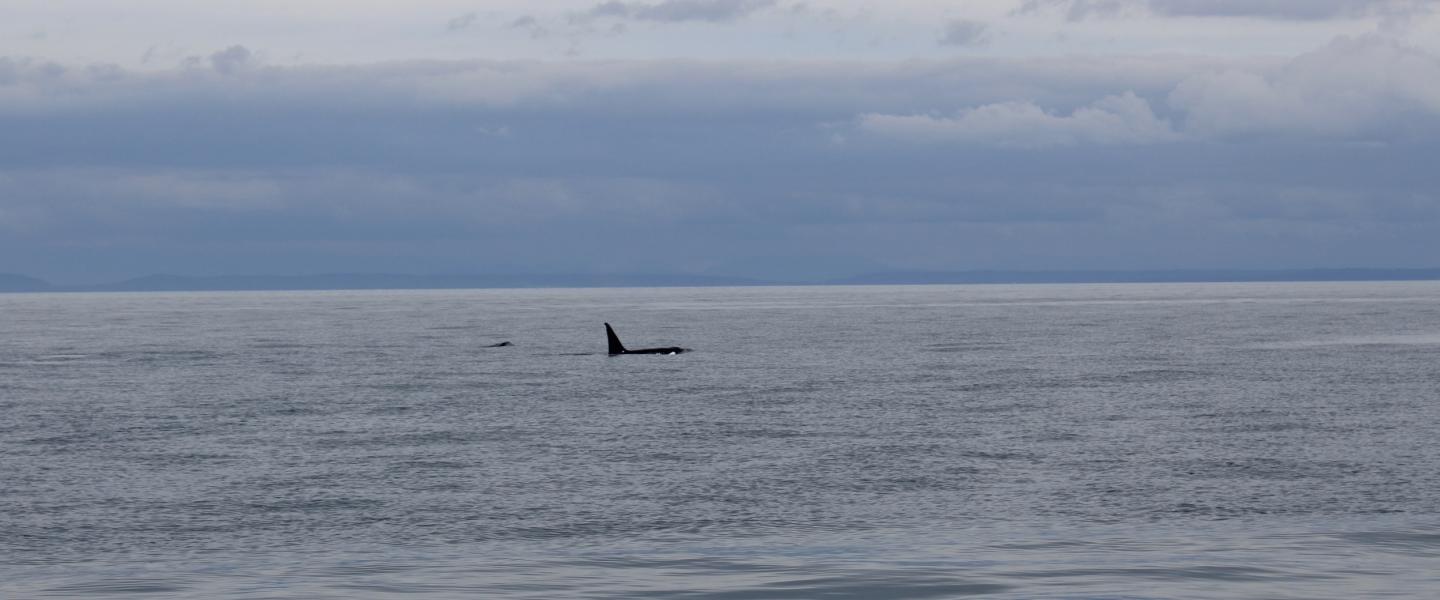
Some days you just get lucky. In April, the orcas are a little harder to predict. The Southern Resident Killer Whales who eat fish are always in and out traveling long distances to find the best fishing spots in the spring, whereas in the summer they usually follow a regular pattern of following the main Salmon schools up and down the west side of the islands towards Vancouver. The Transient Killer Whales are always hard to predict since they travel in smaller groups and zig-zag under the the water to visually scan for their prey – marine mammals. But some days you just get lucky.
Our journey started out taking us north. We had watched a family of Transients there the say before and plenty of their food: Harbor Seals, California Sea Lions, and Steller’s Sea Lions love to haul out on the rocks up there. We did see a lot of prey. The Harbor Seal pups were playing and flopping on the rocks, The Steller Sea Lions were swimming and spinning in the currents, and Bald Eagles were starkly staring at us as we passed by. Don’t worry Transients don’t eat Eagles, they are too fast and too bony. Soon after we passed the largest group of Western Grebes I have ever seen in my life – Transients are south of us! So we did a quick U-turn right before hitting the Canadian border and headed south. Once getting on seen, we were lucky enough to see a very happy family of Transient Orcas and one that I had never seen before. The T086As were in front of us off the south side of San Juan Island. There were at least five individuals in this family and maybe six, it was particularly hard to see all of them as they dodged back in forth in the water. But there was a brand new baby!!! Based on its size and coloration, it is not even a year old. New born orcas are born about 6 – 8 ft. long, weigh 300-400 lbs., and have a pink/orange tint to their skin. Since they are so new too the world we are seeing their skin color, and less of the blubber layers they are building up as they get older. Once they are older and fatter, they keep that classic black and white color.
Our best guess is that this new calf is T086A’s. She has had three other calves, two of which may still be alive – T086A1, T086A2, T086A3. And finally last, but not least we spotted the big male of the family, T087. This adult male stood out from the rest of the family of females and subadults with his 6-foot tall dorsal fin! Transients hunt prey that will fight back, so their bodies usually are pretty scarred, and T087 was no exception. The top point of his fin was missing and there was a pretty sizable rectangular chunk out of the side of the fin as well. All the other orcas have smaller scars on their bodies and notches in their fins to remind us that these are wild animals no matter how much we love to watch them or feel a connection to them.
It was soon time to leave this family as they continued their hunt. We made it home, but not before we stopped to look at a group of Steller Sea lions and California Sea Lions hauled up on the rocks. One Steller caught a fish right in front of us! And held it up for all of us to see. The other Stellers really enjoyed shoving the smaller California Sea Lions off the rocks. Whale, until next time, have a San Juanderful day!
Naturalist Erick
M/V Sea Lion
https://www.sanjuansafaris.com/